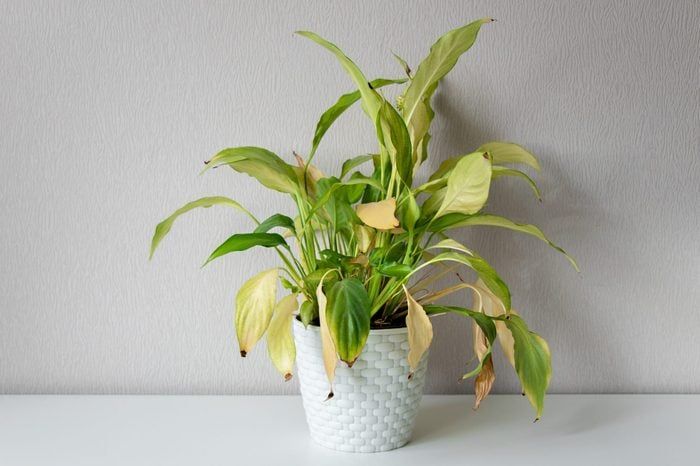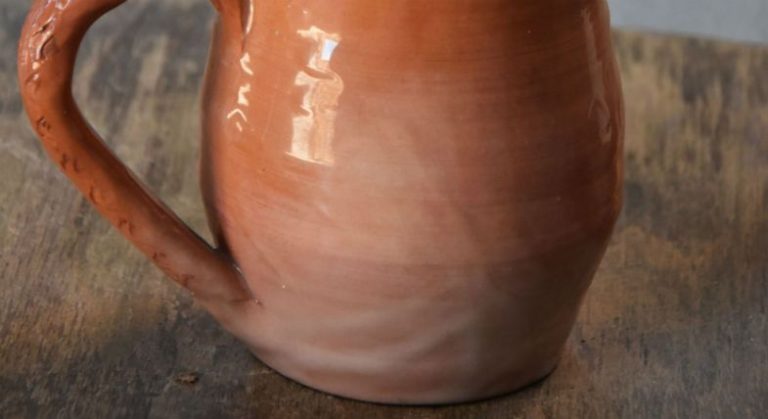How Much Clay Do I Need To Throw A Pot?
Throwing clay on a potter’s wheel to create ceramic pottery and vessels is an ancient and beloved craft. The process involves centering a ball of clay on the spinning wheel, opening up the center, raising the walls, and shaping the form. While it looks effortless when done by skilled potters, it requires practice to center the clay properly and refine shaping techniques.
Before beginning any pottery project on the wheel, one of the first steps is preparing and measuring the clay. Determining how much clay you need for throwing a particular piece or set of pieces is important for having enough material to work with without wasting excess. The amount required depends on several key factors.
Calculating Clay Amount
The amount of clay needed to throw a pot depends primarily on the desired size and thickness of the finished piece. Larger pots, wider bowls, and thicker walls will require more clay, while smaller, thinner pieces will need less. Here are some key factors to consider when estimating how much clay is required:
- The height and width dimensions of the pot – this determines the overall volume that will need to be filled with clay.
- The desired thickness and weight of the pot walls – thicker walls require more clay than thinner ones.
- The type of clay being used – some clay types are heavier and denser than others.
- The throwing method – certain techniques like coil building require more clay overlap and loss.
There are some general rules of thumb that can provide starting estimates, but the exact clay needed is best determined through experience and testing. Recording the clay amounts used for finished pieces provides helpful references for future projects.
Weight of Clay
The weight of clay needed depends on the size of the pot you want to make. Generally, throwing a standard mug or bowl requires about 1-2 pounds (0.5-1kg) of clay. Larger pieces like vases, pots, and pitchers may need 3-5 pounds (1.5-2.5kg) or more. Here are some estimates for common thrown pieces:
- Mug or small bowl – 1-2 lbs (0.5-1kg)
- Large bowl – 2-3 lbs (1-1.5kg)
- Vase – 3-4 lbs (1.5-2kg)
- Tall vase – 4-6 lbs (2-3kg)
- Pitcher – 4-8 lbs (2-4kg)
When estimating clay weight, consider the finished size you want the piece to be and add extra clay. It’s always better to have leftover clay rather than not enough. Allow an extra 0.5-1 lb (0.25-0.5kg) for most pieces to account for clay lost during throwing and trimming.
Clay Volume
To estimate the amount of clay you need for throwing pots, it can be helpful to think in terms of volume rather than weight. Here are some guidelines for estimating the volume of clay needed:
- Small pot or bowl: 1-2 cups of clay
- Medium pot or vase: 3-5 cups of clay
- Large pot or platter: 6-8 cups of clay
- Very large pieces: Up to 10+ cups of clay
For large projects, it may be easier to estimate in gallons. A good rule of thumb is 1 gallon of clay will make a very large pot or several medium pots. Remember that clay shrinks during firing, so the finished piece will be smaller than the original clay volume.
Test out different clay volumes when you are starting out to get a feel for how much clay you need for different projects. Being able to visually estimate needed clay volume takes practice but is an essential skill in pottery.
Factors Affecting Clay Amount
The amount of clay needed to throw a pot depends on several key factors:
Type of Clay
Different types of clay have different properties that affect how much you need. More porous, absorbent clays like earthenware require more clay to throw thicker walls. Dense clays like porcelain require less. The plasticity, shrinkage, and water content of the clay body impacts the amount you’ll use.
Throwing Method
The throwing technique and tools used also determine clay quantity. Throwing thin-walled vessels by hand requires less clay than throwing thick, large pieces on the wheel. Using templates or molds takes more clay than freehand throwing.
Desired Thickness
The intended thickness of the pot walls and base is a major factor. Thin pieces like cups or bowls require less clay than thick, heavy pots or vessels. The type of clay and throwing method will inform desired thickness.
Clay Types
The three main types of clay used for pottery are earthenware, stoneware, and porcelain. Each has different properties that affect the amount of clay required.
Earthenware
Earthenware clay is fired at lower temperatures, usually between 175°C-1200°C. It has a coarse texture and is porous when fired. Earthenware requires less clay due to its coarser particles and tendency to slump more during throwing. Using 1-1.5 lbs per cubic foot is common.
Stoneware
Stoneware clay is fired at higher temperatures between 1200°C-1300°C. It results in a denser, less porous clay that is stronger for functional ware. Stoneware typically requires around 1.5-2 lbs of clay per cubic foot.
Porcelain
Porcelain is fired at the highest temperatures above 1300°C. It has very fine particles that create an even denser, non-porous clay. Porcelain is the strongest type but requires meticulous preparation. Around 2-2.5 lbs of porcelain per cubic foot is standard.
The refined particles and high firing result in less shrinkage with porcelain. So porcelain may require more clay to maintain desired thickness compared to coarser earthenware.
Throwing Method
The amount of clay you need depends on whether you are handbuilding or throwing on the wheel. Handbuilding uses more clay since you are molding thicker sections by hand. Wheel throwing uses less clay overall since you can throw thinner vessels by centering and pulling up the walls. Typically a 1lb block of clay can make 1 medium sized handbuilt mug or 2 wheel thrown mugs.
With handbuilding, you need enough clay to create the basic form and desired thickness. Sections like handles and spouts will require additional clay. For complex handbuilt pieces, it’s best to have extra clay available to attach decorative elements. Wheel throwing uses clay more efficiently since you can center, open up, and stretch the clay into thinner walls. But throwing very large pieces or multiple items will still require significant clay. Evaluate your project and throwing skill level when estimating needed clay.
Desired Thickness
When determining how much clay you need for a pot, the desired thickness of the finished piece is an important consideration. In general, there is a trade-off between thinness and durability.
Thinner pots require less clay, but are more prone to cracking and damage. Thin pottery must be fired carefully and handled gently. Thinness can allow for light permeation and elegant forms, but sacrifices sturdiness.
Thicker pots use more clay, but produce a sturdier finished product that resists cracking and chipping. The thickness provides structural integrity for functional ware and suits sculptural techniques like carving and faceting. However, thicker clay is heavier and can obscure light permeation.
The artist must find the ideal thickness for their specific project based on the clay type, throwing method, firing technique, and intended purpose. A delicate decorative piece may thrive at 3mm thickness, while a sturdy serving bowl may need 5mm or more. Testing and experience will inform the appropriate thickness for each pot.
Estimating Clay for Projects
When estimating how much clay you’ll need for a project, it helps to think about the different pieces you’ll be making. Here are some tips for estimating clay needs for common projects:
Mugs
For a basic mug shape, you’ll need about 1-1.5 lbs of clay per mug. Smaller mugs may use around 0.75 lbs, while large mugs could need 2 lbs or more.
Bowls
Small bowls like salad bowls can be made with about 1-2 lbs of clay. Larger serving bowls may require 3-5 lbs or more depending on the size and thickness.
Plates
Dinner plates often need about 2-3 lbs of clay per plate. Smaller plates like salad plates may only need 1-1.5 lbs of clay.
Vases
Slim vase shapes may need 1-2 lbs of clay, while wider shapes can require 3-5 lbs. Large floor vases could use upwards of 10-15 lbs depending on the size.
Sculptures
It’s hard to estimate clay for freestanding sculptures. Start with 10-20 lbs and scale up as needed for larger works. Consider the size and complexity of the desired sculpture.
Always make extra clay to account for thickness changes, defects, and scraps during throwing and trimming. Having an extra 10-20% clay can prevent running out before finishing a project.
Conclusion
Throwing pottery requires an understanding of how much clay is needed based on the size, thickness, and style of the piece. While exact clay amounts can’t be precisely calculated without the finished piece in hand, you can make reasonable estimates by thinking about the pot’s dimensions and your preferred throwing techniques.
The clay required depends on if you want a thinner walled vessel versus a thicker sculptural form. Small alterations like adding handles or texture will also impact total clay needs. Experience will help dial in how much clay is right for your projects.
With some calculations for weight and volume, as well as factoring in your clay type and throwing style, you’ll get better at eyeballing the right amount of clay. Test out different amounts to find what works best for your goals. Plan for extra clay, as you can always reuse the excess. Throwing pottery involves a bit of trial and error, but learning how to properly estimate clay is an important step.



